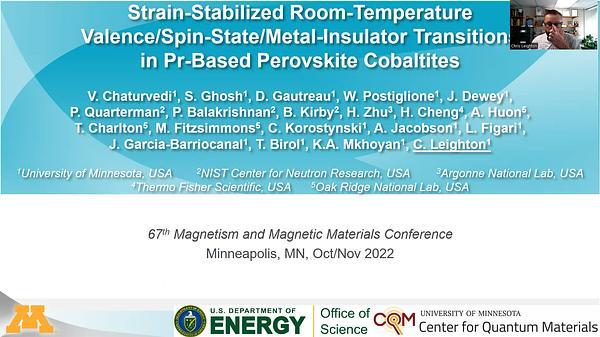Would you like to see your presentation here, made available to a global audience of researchers?
Add your own presentation or have us affordably record your next conference.
The introduction of magnetism in topological insulators, semiconducting materials that are non-magnetic by nature, has long been sought after in order to realize exotic quantum effects. Most prominent is the quantum anomalous Hall effect (QAHE), where electronic surface states allow the dissipationless propagation of charges through a material 1. Additionally, these states are 100% spin-polarized and immune to external perturbations, rendering them ideal candidates for spintronic applications as well as quantum computing.
The QAHE is not restricted to a particular temperature range but has so far only been observed at around 1 K in magnetically doped topological insulators 2. Thus, the task at hand is to find new concepts to magnetize the topological insulator. Here, we investigate a new approach based on proximity induced magnetization in heterostructures, where the topological insulator Bi2Te3 and the topologically trivial, magnetic add-layer MnTe share an interface but are otherwise spatially separated 3. We employ polarized neutron reflectivity, x-ray spectroscopy and magnetotransport measurements to evaluate the magnetic properties of each individual layer and the magnetic landscape at the MnTe/Bi2Te3 interface. We find the MnTe layer in a ferromagnetic instead of the anticipated antiferromagnetic state and that Mn constituents penetrate into the Bi2Te3 layer. Those effects go often unnoticed and can be misinterpreted as proximity induced magnetization, for which no indication can be found. Hence, we provide a robust, multitechnique approach to gain a complete picture of the magnetic structure and the toolbox to optimize the interface, thereby increasing the temperature range the QAHE can be observed in. Our work thus contributes to the transformation of magnetic topological insulators from fundamental research to practical applications.
References
1 F. D. M. Haldane, Phys. Rev. Lett. 61, 2015 (1988)
2 C. Z. Chang et al., Science 340, 167 (2013)
3 G. Awana et al., Phys. Rev. Mater. 6, 053402 (2022)

